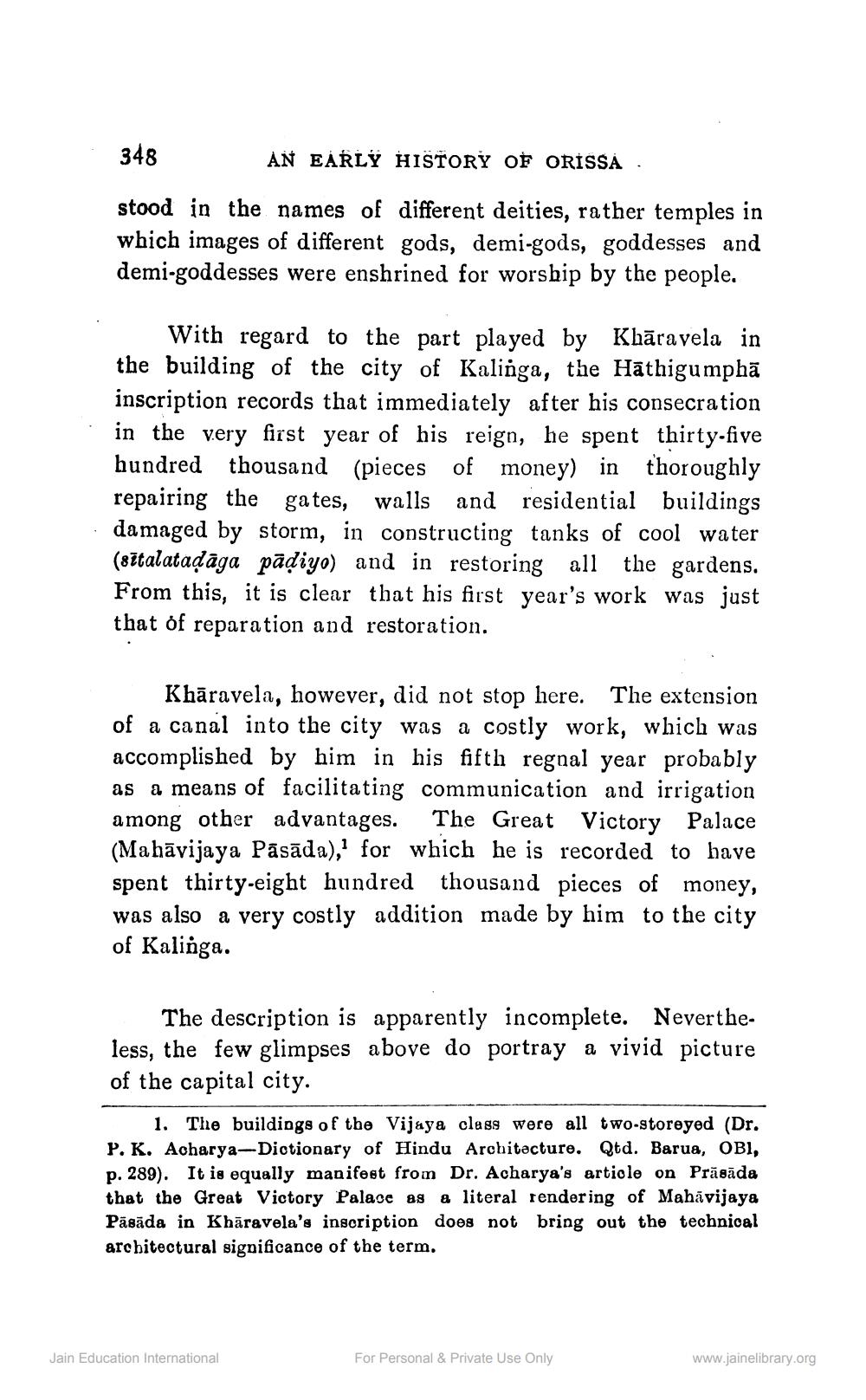________________
348
AN EARLY HISTORY OF ORISSA.
stood in the names of different deities, rather temples in which images of different gods, demi-gods, goddesses and demi-goddesses were enshrined for worship by the people.
With regard to the part played by Khāravela in the building of the city of Kalinga, the Hāthigumphā inscription records that immediately after his consecration in the very first year of his reign, he spent thirty-five hundred thousand (pieces of money) in thoroughly repairing the gates, walls and residential buildings damaged by storm, in constructing tanks of cool water (sītalatadāga pādiyo) and in restoring all the gardens. From this, it is clear that his first year's work was just that of reparation and restoration.
Khāravela, however, did not stop here. The extension of a canal into the city was a costly work, which was accomplished by him in his fifth regnal year probably as a means of facilitating communication and irrigation among other advantages. The Great Victory Palace (Mahāvijaya Pāsāda), for which he is recorded to have spent thirty-eight hundred thousand pieces of money, was also a very costly addition made by him to the city of Kalinga.
The description is apparently incomplete. Nevertheless, the few glimpses above do portray a vivid picture of the capital city.
1. The buildings of the Vijaya class were all two-storeyed (Dr. P. K. Acharya- Dictionary of Hindu Architecture. Qtd. Barua, OBI, p. 289). It is equally manifest from Dr. Acharya's article on Prāsāda hat the Great Victory Palace as a literal rendering of Mahāvijaya Pāsāda in Khāravela's inscription does not bring out the technical architectural significance of the term.
Jain Education International
For Personal & Private Use Only
www.jainelibrary.org




